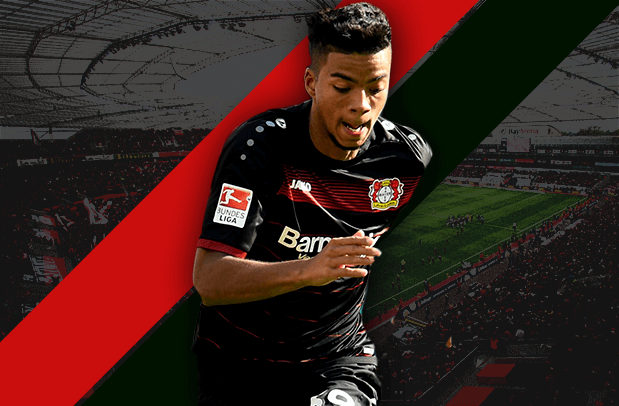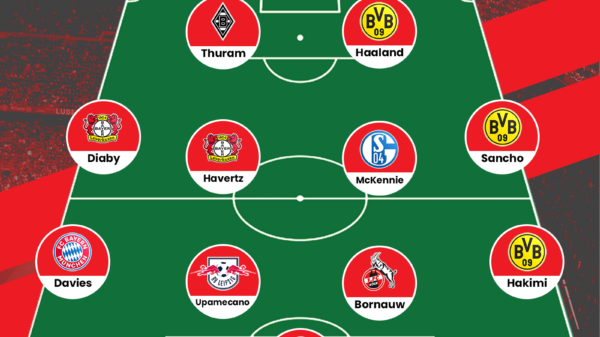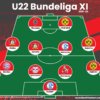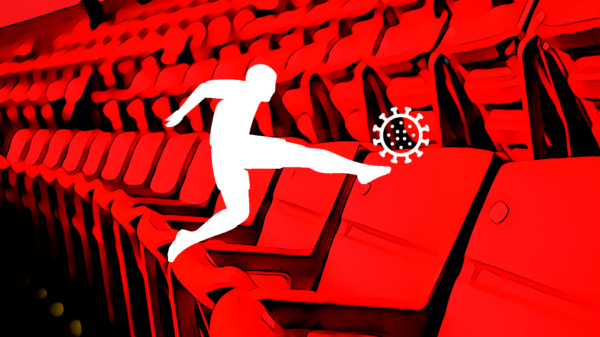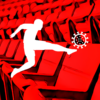Andrew Thompson writes a detailed Scout Report about the versatile Leverkusen and Germany youngster, Benjamin Henrichs.
Here we are…back in Germany once again – land of the “eins, zwei, eins, zwei…very Prussian” (thank you, Eddie Izzard) way of producing quality young footballers at an alarming rate with almost an assembly-line type of efficiency.
With the complete overhaul of the youth development program nationwide, clubs of all sizes now have the luxury of producing players with which they can either build a future around, or use for financial gains to develop the club in other areas. For a club like Bayer Leverkusen, the current directive is to put the final touches on a player’s development. Leverkusen starlets, Jonathan Tah, Joel Pohjanpalo, Julian Brandt, Hakan Calhanoglu and Tin Jedvaj all came to the club at a point in their progression in the youth ranks where a final brush stroke had to be applied. The club has done a wonderful job putting faith in young players if they are good enough, but it remains to be seen if the club can produce its own youth players to bring them through the ranks and into the first-team. One player that has negotiated that path and now has a starting role at the club is Benjamin Henrichs.

Who is Benjamin Henrichs?
Born in the North Rhine-Westphalian city of Bocholt in 1997, Benjamin Henrichs is seemingly one for the future. Beginning his footballing education at a young age with SpVg Porz Jugend, Henrichs moved on to Bayer Leverkusen at the age of seven on a free move in 2004. As his development continued through the Bay-Arena side’s youth ranks, he would break into the German youth set-up in 2011 when he was called into the U15 side. One year later he was promoted by his club from the youth program up to the U17 side and by 2013 he was in the U19’s for Leverkusen while also establishing himself as a stalwart in the German U17 side, whom he would go on to make fifteen appearances for while scoring twice.
Talent Radar Accolades:
At the beginning of last season Henrichs was promoted to the first-team, though he would still make regular appearances for the U19’s in the UEFA Youth League, the DFB-Junioren Pokal and the A-Junioren Bundesliga West. Despite his importance to the U19’s, he made ten combined appearances for the first-team in the Bundesliga and the Europa League, starting in five of those ten outings. As he was being eased into the first-team set-up at the Bay-Arena, Henrichs also broke into the German U19 team, whom he would make twelve appearances for as well as scoring the eighth goal of his youth international career. What is quite incredible about his appearances last season is that he featured in eight different roles across the park: left-wing, right-wing, attacking-midfield, center-midfield, holding-midfield, left-back and right-back…an absolutely ridiculous ode to his versatility and flexibility as a player. Even more impressive were his goals and assists tallies: eleven goals and twenty assists in sixty-four total U19 appearances for a player who so often has his role changed is a testament to his ability going forward despite so often being played in a deeper role.
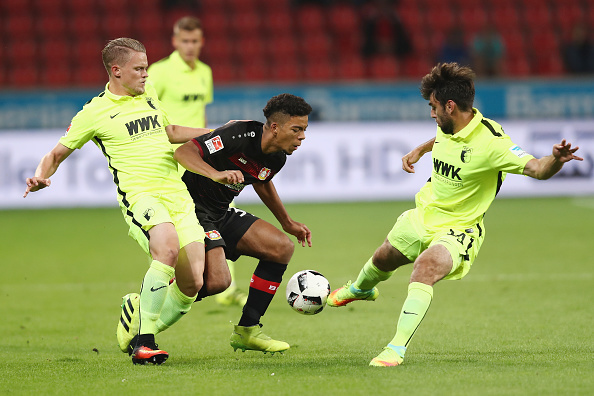
Henrichs has been gaining some valuable first-team experience in the Bundesliga this season | Photo by Alex Grimm / Bongarts / Getty Images
As for the current campaign, such has been his development and impressive performances that manager Roger Schmidt has named him in the starting XI in three out of Leverkusen’s four Bundesliga fixtures (home to Hamburg, away at Eintracht Frankfurt and home to Augsburg), as well as their first Champions League group stage match (home to CSKA Moscow) and their DFB Pokal first-round match away at SC Hauenstein. Five starts in six opportunities shows that Henrichs’ meteoric rise into the first-team is sure to continue.
What is his Style of Play?
Leverkusen’s brand of attacking football under Roger Schmidt has certainly turned a head or two since last season. A possession-based system that also has the ability to be direct and incisive on the counter at a moment’s notice is owed plenty of credit for FC Pharmacy’s third-place finish last season. Though they’ve struggled out of the gate in the current campaign (one win in their first four outings and only netting five times in the process), Leverkusen are still quite capable of fixing the ship and charging up the table. Heinrichs is a player who fits well into this system, being the kind of all-rounder he is. He’s versatile, and comfortable playing across the pitch. Added to this is his ability to contribute heavily both in attack, and defence.
What are his Strengths?
With Schmidt’s system firmly implanted in the first-team, Henrichs should be able to continue to impress and develop in a tactical scheme that highlights his best traits. His numbers at youth level highlight his ability to not only be fairly creative for a wing-back (1.67 chances/ninety-minutes this season), but many of those chances are created by Henrichs playing a through ball or a long ball to players further forward, or getting forward himself and trying to provide service into the area. On that same point, with his venturing a bit forward, Henrichs is also rather adept at putting in a good tackle (3.33 tackles won/ninety-minutes) as well as cutting off passing lanes before the opposition can get into the final third (2 interceptions/ninety-minutes). When asked though, he can sit deep and soak up pressure as Leverkusen so often are not aggressive without the ball. For a player who is still just nineteen years old, Henrichs is not only a very adaptable wing-back but also shows growing maturity.
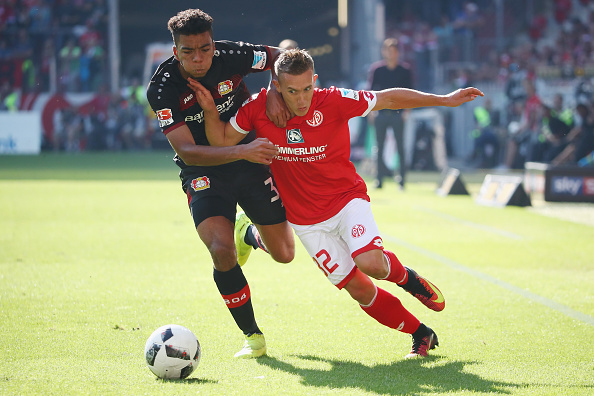
Henrichs in action against Mainz in the Bundesliga | Photo by Alex Grimm / Bongarts / Getty Images
What are his Weaknesses?
Despite his maturation and development, it still must be remembered that Henrichs is not even twenty yet, and thus is still prone to mistakes, especially on the mental side of the game. Though his positional and spatial awareness is solid, he’s still susceptible to losing his concentration when at the back and breaking down mentally, even for a split second…which is often costly at the highest level. With his willingness to get forward or to provide service from deeper areas, Schmidt has in Henrichs another source to play a decent ball from the back (along with Jonathan Tah and Aleksandar Dragovic), but the German youth international will have to improve on the consistency of his delivery. Regardless of that perceived weakness, his ability to get forward and be an outlet or a source simultaneously means that his service is not absolutely vital to the way Leverkusen operate further up the pitch, and thus he is still a far more valued piece of the puzzle than a question mark.
Read all our other Scout Reports here.
- 20 Key Young Players to Watch from 20 Premier League Teams - August 10, 2018
- World Cup 2018: Germany Warning Signs - June 20, 2018
- MLS 2017: Top 5 U-22 Players of the Season - December 6, 2017




















































